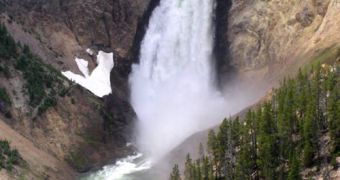The Yellowstone supervolcano is one of the world's three known such structures, and readings collected lately show that it may be getting ready to blow up again. Researchers are currently seeking to determine the risk of that actually happen, as the consequences would be catastrophic.
In its entirety, the caldera of this massive volcano covers an area about 25 by 37 miles (40 by 60 kilometers) in Wyoming. If it were to blow up, an ash layer inches thick would cover the entire continental United States within a few days.
Such an event would also see the caldera blow up, and getting reshaped. In all likelihood, the eruption would be so powerful that it would also trigger powerful earthquakes around the country, and perhaps elsewhere on the globe.
There are also high chances that the massive ash plume the volcano will emit could play a role in global cooling, bringing about volcanic winters such as the one that caused 1816 to become known as the Year Without a Summer.
Geologists say that Yellowstone last exploded some 640,000 years ago, and add that the volcano erupted three times in 2.1 million years. This means that its time may be coming again.
There are several factors that appear to confirm this hypothesis, such as for example the fact that the crust at the caldera has been rising by 7 centimeters annually since 2004. Yet, experts appear convinced that there is currently nothing to worry about.
“There is no evidence of an imminent volcanic eruption or hydrothermal explosion. That’s the bottom line. A lot of calderas [giant volcanic craters] worldwide go up and down over decades without erupting,” says Robert B. Smith.
The expert, who is a seismologist and a professor a geophysics at the University of Utah, is also the lead author of a new study detailing Yellowstone's situation. The university, together with the US Park Service and the Geological Survey (USGS) created the Yellowstone Observatory in 2000.
“Our best evidence is that the crustal magma chamber is filling with molten rock. But we have no idea how long this process goes on before there either is an eruption or the inflow of molten rock stops and the caldera deflates again,” Smith reveals, quoted by Daily Galaxy.
But the main problem with determining what will happen is that experts have way to few data to be able to accurately predict what will go on in the future. The best they can do is conduct simulations, but debates are bound to abound in the near future.

 14 DAY TRIAL //
14 DAY TRIAL //